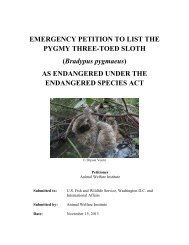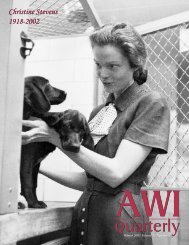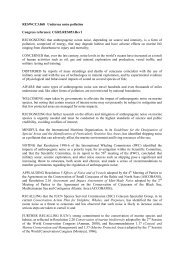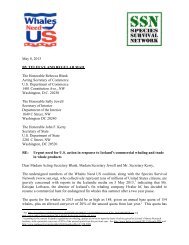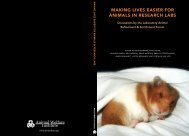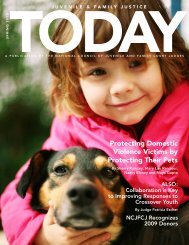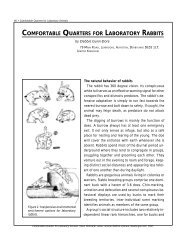A Common Bond - The National Link Coalition
A Common Bond - The National Link Coalition
A Common Bond - The National Link Coalition
- No tags were found...
Create successful ePaper yourself
Turn your PDF publications into a flip-book with our unique Google optimized e-Paper software.
Chapter 4Adapt Law and Policy to Include Consideration of the <strong>Common</strong> <strong>Bond</strong>maltreatment, they are not necessary for collaboration to occur among theagencies that address child and animal cruelty. For example, at times thearrangements between a local child protection agency and an animal servicesagency can be informal, built on the professional relationships between theagencies’ staff. Other times, formal policies may be adopted by child protectiveservices and animal services agencies to share information and resources. Forexample, in Wellington County, Ontario, Canada, the Family and Children’sServices (FCS) investigators and Humane Society investigators completedchecklists to examine connections between forms of violence. FCS workersfound that, in the 1,485 homes surveyed which contained animal companions,there was cause for concern about the welfare of the animals in 20% of them.Similarly, Humane Society workers completed 247 checklists, resulting in 10referrals to FCS (Zilney & Zilney, 2005).Basically, there are three ways in which cross-reporting, training, and sharinginformation and resources can be encouraged: through legal statutes, agencypolicy, and formal (multidisciplinary teams) and informal professionalnetworking. Juvenile and family courts also need supportive mechanisms toaddress both child maltreatment and animal cruelty when they arise in thesame case (much as they should be equipped to address cases involving bothchild maltreatment and domestic violence in a child’s home). Adding animalprotection personnel to local child protective services advisory boards wouldbe another important step to take so that the appropriate authorities are in theposition to support this important exchange of information.Guideline 10<strong>The</strong> laws, policies, and professional norms surroundingthe issue of confidentiality should be thoroughlystudied with the goal of finding ways to encouragecollaborative interagency interactions when reportingand investigating child and animal abuse and neglect.<strong>The</strong> protection of confidentiality is seen as a core ethical principle by manyprofessional groups operating in various contexts. Child protective servicesworkers may hesitate to report animal cruelty for fear of violating a family’strust, breaching confidentiality, and perhaps threatening the stability of theworking relationship with their clients. Similarly, psychologists, social workers,marriage and family counselors, and others working in private and publicsettings emphasize the need for confidentiality.Interestingly, although the concept of confidentiality is a core principle for mostprofessional groups, there has been little empirical study of how mandated30



